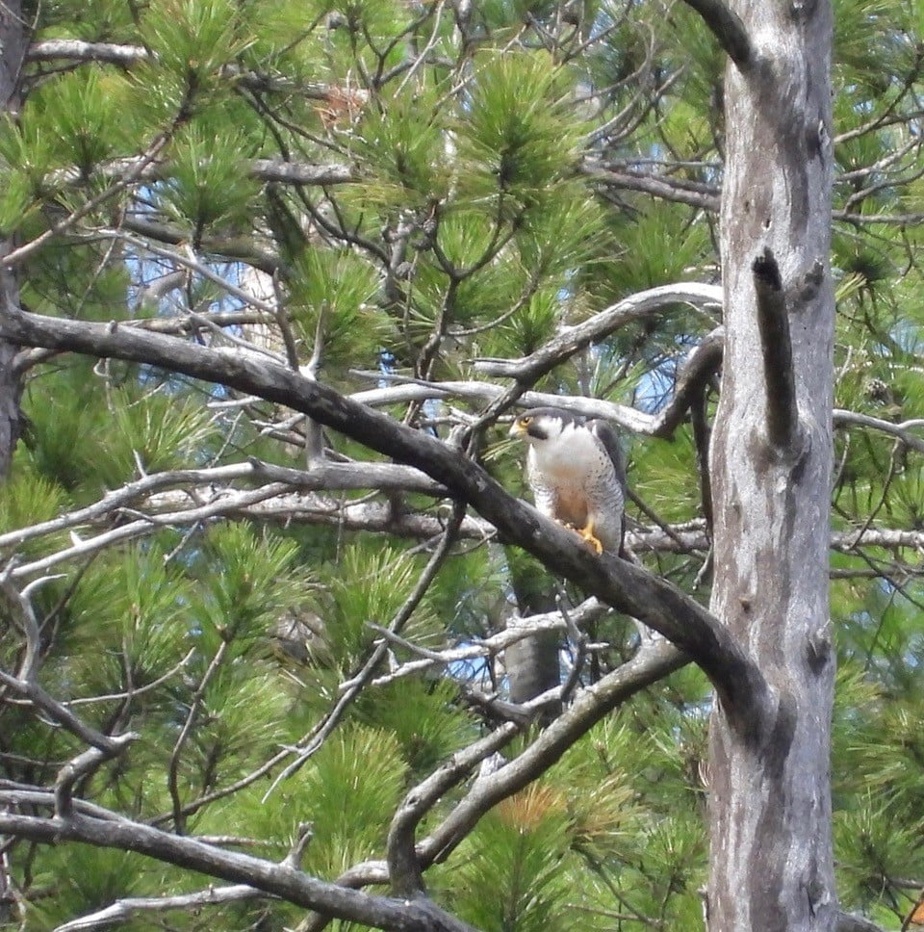Over time, climbers have adapted their practice to the presence of peregrine falcons on climbing sites. The latter seem to have benefited from this solicitude: year after year, several falcons have hatched, grown and taken flight.
Posted at 11:30 a.m.
“We are surely doing things well because we have baby falcons despite the fact that we keep portions of the site open,” observes Nicolas Rodrigue, volunteer at the Quebec Federation of Mountains and Climbing (FQME) in the development of sites and in the monitoring of falcons. He is notably responsible for the Gros Morne site, in Chaudière-Appalaches. “It’s the best performance indicator there is, proof that cohabitation works. »
The peregrine falcon is a vulnerable species in Quebec, although its population is on the way to recovery. When the time comes to nest, it particularly likes the cliffs. In 2010, the FQME and the Regroupement Québec Oiseaux published a Climbing wall management guide for the protection of birds of prey. “The FQME was avant-garde,” says Mr. Rogrigue, an environmental inspector by profession.
The right balance
The idea was to find the right balance: not disturbing the falcon during the delicate period of nesting while pursuing climbing activities. Over the years it was realized that it was not necessary to close an entire site when a pair of hawks were courting and looking for a nesting place.
“By dint of collecting data, we end up having an idea of the places where they will nest, indicates Mr. Rodrigue. There are always one or two sites that they keep year after year. We therefore put ourselves in observation mode to see which sector we will close as a result. »

PHOTO SUZIE BERGERON, FROM THE FQME FACEBOOK PAGE
A peregrine falcon watches over a climbing wall.
Both visual disturbance and auditory disturbance must be considered. At some distance it is minimal. In addition, a fall in the cliff can very well constitute a visual and sound screen. Studies have also shown that the falcon is more irritated by what is above the nest. For these birds, the threats come mainly from the sky: other birds of prey, or crows always ready to lay their beak on an egg or a falcon.
A gazebo on top of a wall might be more problematic than climbing below the nest.
Nicolas Rodrigue, volunteer at the Quebec Mountain and Climbing Federation
Site managers take all of this into consideration. This is how at the Weir climbing site, in the Laurentians, we decided this year to allow climbing on certain routes that we tended to close completely during the nesting period. On the other hand, we limit the height allowed: at a certain point, hop, we have to go down.
“If we completely closed a wall, it could be that we have more people who would not respect the instructions 100%, estimates Mr. Rodrigue. While there, we close a sector for a while. When it reopens it’s cool, people will do the lanes. »
Managers have also developed areas not popular with falcons to provide additional options.
Inform climbers
Nicolas Rodrigue notes that site owners do not all have the same view of escalation and the disruption it could cause. The Society of Outdoor Establishments of Quebec (SEPAQ) has a different mission than a private conservation reserve, a private owner has another perspective. And then, the hawks themselves have individual differences in tolerance. Some falcons settle in quarries and don’t seem too bothered by the din and activity of these sites.
Site managers seek to inform climbers as much as possible with on-site posters and social media posts. There is also a form of mutual surveillance between climbers. “There are a lot of volunteers involved on the sites. If they tell people to follow the instructions, the message gets across very well because they are local people, not someone from the Department of Natural Resources or a police officer. »
The FQME and local clubs also make a point of informing climbers when the falcons finally take flight, generally in July or August. It’s a way to encourage the troops for the following season.
Climbers could perhaps be put to work finding names for the falcons: a little falcon named Mousqueton would be cute, wouldn’t it?
Suggested video
On two wheels in Switzerland
A short mountain bike trip in Switzerland is always good.
digit of the week
5020
This is the distance in kilometers between Cape Spear, Newfoundland, the most easterly point in Canada, and Vancouver. Cap Spear is closer to Paris (4000 km only).

